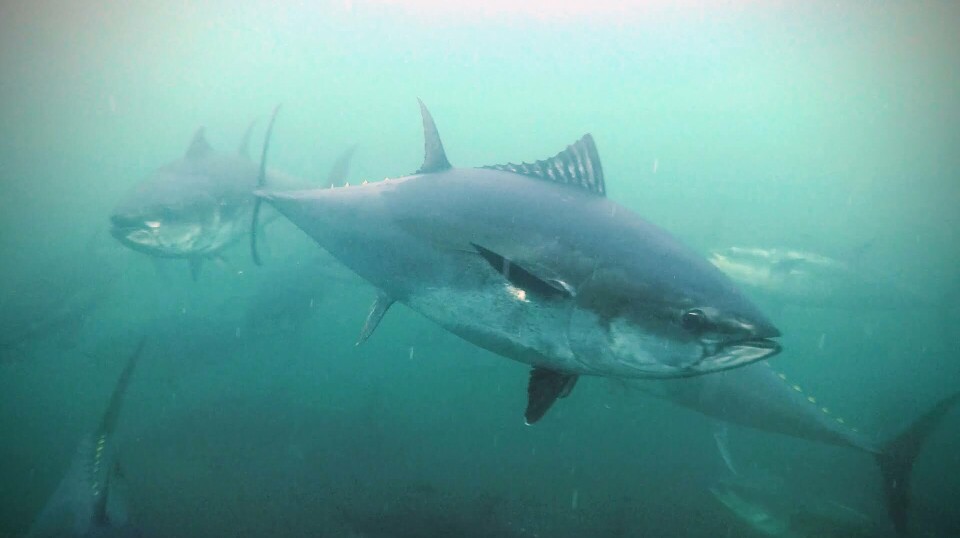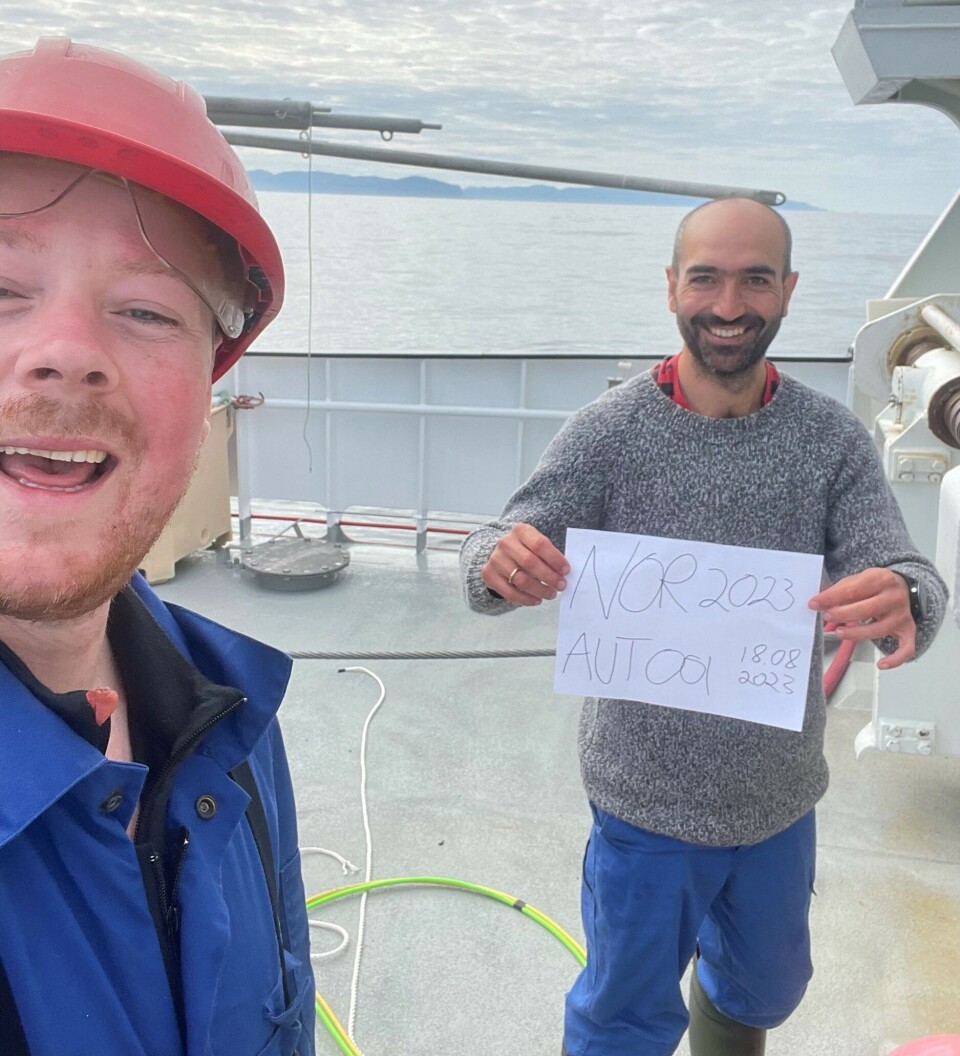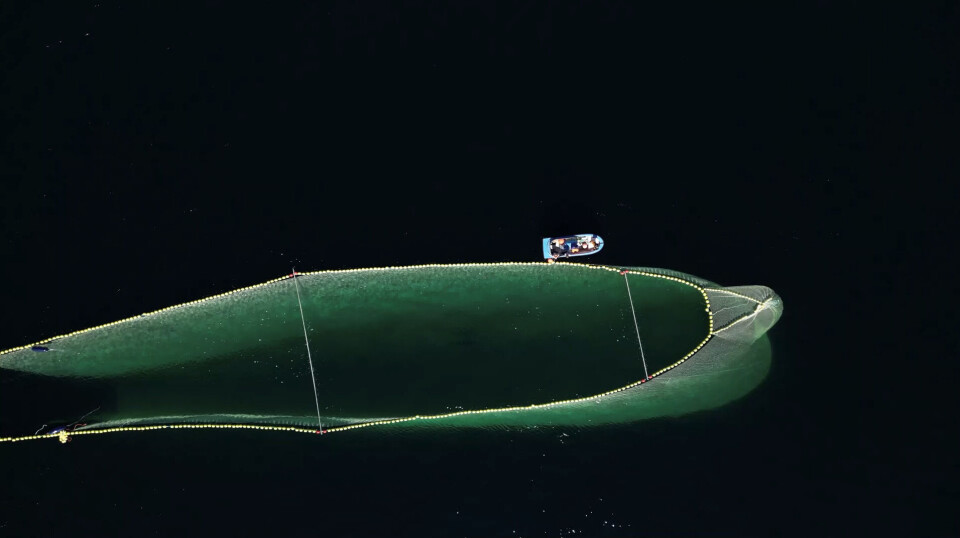THIS CONTENT IS BROUGHT TO YOU BY the Institute of Marine Research - read more

Live storage of bluefin tuna: Historic success in Norwegian waters
Researchers and fisheries joined forces in trapping and transporting live bluefin tuna in the 200-300 kilo weight class.
For several years, marine researchers have tried to catch bluefin tuna, the world's largest tuna species, for live storage in Norway.
They have now finally succeeded. The team aboard fishing vessel Vestbris, aided by Fjordgyn from the Norwegian Directorate of Fisheries, first succeded in catching a bluefin tuna off the rough Stad coast. They were able to transfer it to the specially designed transport cage, and then tow it to shore.
In the following week, they replicated and scaled up the feat, with 22 bluefin tuna in the transport cage.
Might solve several problems
“It's a big deal to finally succeed! We have learned a lot from these small proofs of concept already,” marine researcher and Institute of Marine Research (IMR) project manager Manu Sistiaga says.

Being able to store the enormous bluefin tunas alive in a cage is a kind of holy grail for Norwegian tuna fisheries. It is being done in the Mediterranean, but under completely different conditions.
Though conventional net fishing, a large catch of bluefin tuna is difficult to handle quickly enough to ensure good quality. Additionally, it is an advantage to be able to send the fish out to the market little by little, instead of all at once.
Live storage may solve both these issues. But many research questions remain.
Researchers feel confident about the design
“Now we know that we can achieve a controlled transfer from net to transport cage, and we have documented that the tuna are doing well inside it, even after several days of towing,” Sistiaga says.
The cage forms a large and deep pool. The researchare are confident that they can easily have 50-100 fish in it.
At shore, researchers were able to inspect the cage, the fish, and humanely euthanise them using electricity (another related project by the IMR).
Raises many new questions
Fish quality researchers from Nofima and IMR have secured a number of samples to learn more about the 'live stored' fish, as opposed to fish caught and killed at sea.
A small sample of the very first transported fish was sent out to the Oslo market to learn about the potential of achieving a higher price.

“In the long run, we need to find out how long the fish can safely be kept in a cage, what food they would need, and what sea tempertures they can tolerate. But first, we need to improve on the catch, transfer, and transport process,” Sistiaga says.
Pleased to have the Directorate on board
In addition to supplying a vessel and crew, the Directorate of Fisheries is responsible for coordinating the project and liaising with ICCAT – The International Commission for the Conservation of Atlantic Tunas. There are strict regulations and reporting for the species.
“The regulations are adapted to fisheries in the Mediterranean, where conditions are drastically different from here. They can use divers for many operations, which we cannot," Hermann Pettersen, project manager at the Directorate, says.
"We need to invent new methods"
Pettersen believes we have to think differently in Norwegian waters, while creating a fishery that is sustainable, controllable, and accepted by the other ICCAT member nations.
“Our project shows the importance of cooperation between the management, industry, and research. We were lucky to sign a contract with Vestbris this year, with an experienced crew with good expertise in catching tuna.," he says.

This content is paid for and presented by the Institute of Marine Research
This content is created by the Institute of Marine Research's communication staff, who use this platform to communicate science and share results from research with the public. The Institute of Marine Research is one of more than 80 owners of ScienceNorway.no. Read more here.
More content from the Institute of Marine Research:
-
These whales have summer jobs as ocean fertilisers
-
Have researchers found the world’s first bamboo coral reef?
-
Herring suffered collective memory loss and forgot about their spawning ground
-
Researchers found 1,580 different bacteria in Bergen's sewage. They are all resistant to antibiotics
-
For the first time, marine researchers have remotely controlled an unmanned vessel from the control room in Bergen
-
New discovery: Cod can adjust to climate change – from one generation to the next




































